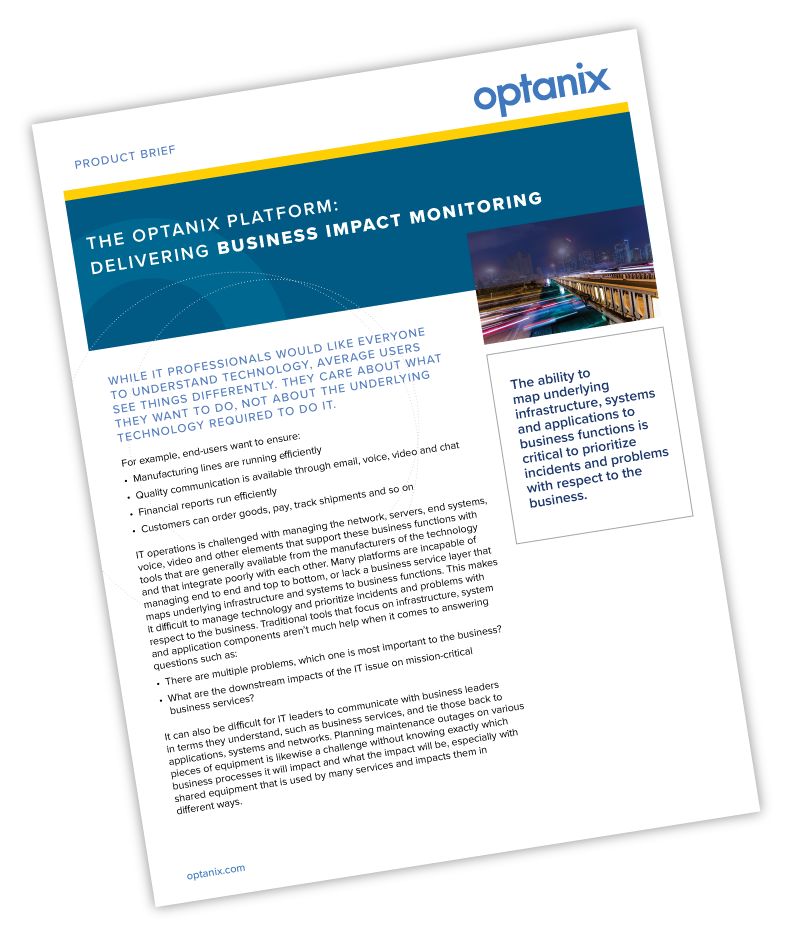
The True Cost of Keeping the Lights On
For the longest time, IT’s primary job was to keep the lights on. It was all about keeping servers up and running, upgrading software, fixing users’ laptops and setting up new email accounts. Well, there was more to it than that – but the reality was that IT was a back-office support organization. And no one thanked IT for doing this – IT was the ‘department of no’, seen as an ivory tower that created frustration across the business.
Fast forward to today, and business expectations of IT are completely different. Just about every department depends on information technology to drive their piece of the business. Businesses rely on software to support customers, accelerate sales, increase productivity and create competitive advantage. IT isn’t in the back office anymore – it’s an equal partner in business success and a critical source of innovation.
Day-to-Day Preparations Get in the Way of Innovation
Or at least it should be. However, here’s the reality: many IT organizations are still bogged down keeping the lights on. If you spend 80% of your time dealing with business as usual, and the other 20% firefighting crises, then there’s no time left to get creative. Even if IT wants to work with the business and has great ideas, there’s no capacity to execute.
What’s the result? Businesses lose faith in their IT organization. When that happens, people look for other solutions. Often this comes from the bottom up, as in the case of shadow IT. Other times it’s top down – for example, when a company appoints a Chief Digital Officer (CDO) to drive technology innovation, leaving the CIO to struggle with day-to-day operations.
What are the consequences of this?
1. Lower Growth and Profitability
First of all, innovation suffers. While that may seem obvious, it’s worth reflecting on that for a minute. Technological innovation has a tremendous impact on business growth and profitability. That’s completely obvious in the consumer space, where technology leaders such as Amazon and eBay transformed the retail world. However, it’s equally true with B2B companies. For example, a recent McKinsey study looked at B2B digital leaders, and found that they generated 5x the revenue growth of other B2B companies. Growth in profits was even more spectacular – 8x as much as digital laggards.
2. Increased Risk and Costs
However, it’s not just about revenues – it’s also about risk and cost. When IT can’t deliver, the business has to find other solutions. Because of this, shadow IT is a huge issue – and the public cloud is only making it worse. By providing IT infrastructure on demand, the cloud makes it easy for anyone – not just the IT department – to spin up new applications and services. That leads to massive governance and compliance issues, as well as dramatically increased security risks. And there’s no visibility of this shadow cloud usage – leading to costs that spiral out of control.
3. Don’t Underestimate the Problem
In fact, shadow IT is even worse than IT departments imagine. A recent Cisco study made this abundantly clear. When Cisco looked across a broad cross-section of companies, it found that IT departments assume that their companies use 51 cloud services on average. The reality? Companies actually use an average of 730 cloud services. In other words, shadow IT accounts for more than 93% of all cloud services. IT should be frightened – very frightened.
So What’s the Answer?
First of all, IT can’t just walk away from keeping the lights on. As businesses pursue aggressive digitalization strategies, they are becoming more and more dependent on information technology. Whether it’s an e-commerce portal or a manufacturing control system, technology has to work 24×7. Keeping these types of business services up and running isn’t just about IT keeping its own lights on. It’s about making sure that the business itself keeps running – and that makes IT operations a mission-critical function.
Second, IT can’t re-exert the level of control it had in the past. That’s why IT was known as the ‘department of no’ and it’s no way to add value to the business. And even if IT departments try to do this, Pandora’s box is already open – and IT can’t put everything back inside. With the cloud, IT has both gained agility and sacrificed control – and there’s no going back.
Freeing Resources to Drive Innovation
So the only option left is to make it much easier to keep the lights on – and that takes a fundamental change in the way that IT operates. For example, think about how service outages and performance issues are addressed today. Whenever there’s an issue, it can take days to resolve – directly impacting business and consuming huge amounts of IT resources. Why? Because IT still operates in technology silos and relies on tribal knowledge to diagnose and remediate service outages. Technology domain experts spend hours piecing together monitoring data, and then end up pointing fingers in the war room trying to figure out what’s gone wrong.
Instead, IT needs to start applying advanced information technology to managing IT itself. Coming back to the service outage example, there are already intelligent platforms that can automatically diagnose the root cause of a service outage by knitting together and analyzing data from multiple monitoring systems. And, in most cases, these platforms can get to the root cause in less than 30 seconds. Compare that to hours or days with traditional manual approaches, and you start to see the enormous potential. It’s a win-win – better service quality and less effort.
Of course, this is only one example of how IT can lower the effort of day-to-day operations. Process automation is another key example. By automating repetitive processes – setting up new accounts, resetting passwords and so on – IT can drive further productivity gains. Self-service portals are yet another example – whether that’s for initiating changes, reporting incidents or requesting new IT services.
Here’s the Bottom Line
IT today is facing unprecedented business demands, coupled with disruptive technologies such as the cloud. It’s an enormous opportunity for IT organizations to deliver unprecedented value to their businesses. It’s also an opportunity to fail – you can’t transform what you deliver if you don’t change how you deliver. IT needs to cast aside yesterday’s slow-moving, resource-intensive approach to keeping the lights on – leveraging leading-edge technologies to accelerate day-to-day operations and lay the foundation for meaningful innovation.
Prioritize IT incidents and problems based on business impact.
